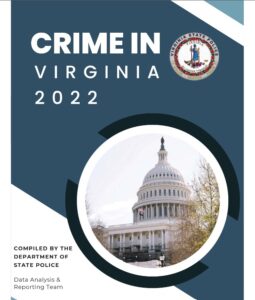 by Dick Hall-Sizemore
by Dick Hall-Sizemore
The 2022 increase in the Virginia crime rate in all categories except drugs reported by Jim Bacon in an earlier article on this blog is indeed worrisome.
In the short term, crime rates can fluctuate. However, Virginia, and the nation, have experienced an overall decrease in crime rates over past two decades or so. If the increases over the past couple of years continue, at some point in the future, statisticians will be able to say that the overall trend line has significantly changed and will point to this period as the point at which something happened to change the overall trend in the crime rate.
There are some on this blog who blame the rise in the crime rate on changes in criminal laws and policies, such as early release of offenders from prison, reducing bond requirements for nonviolent defendants, progressive prosecutors pursuing social justice objectives, etc. They offer no evidence to substantiate the relationship of these changes, to the extent they actually exist, to the increase in the crime rate. In effect, their claims are based on their personal ideological predisposition. I could offer a set of proposals for the increase in the crime rate that would differ substantially from that offered by these other commentators. However, I would have no evidence to back up my claims, either. Therefore, I will desist.
If the recent increases indeed mark a significant change in the trend line, it will be up to criminologists and sociologists to develop explanations as to the cause of the change. Adequately explaining major shifts in human behavior can be difficult, however. Criminologists and others still have not settled on an explanation of the decrease in crime since the 1990’s.
Switching gears some, the State Police website provides a gold mine for data nerds. There is the statewide Crime in Virginia report, supplemented by more detailed data here. (In this latter link, one can slice and dice the data by numerous variables, such as by locality, by offense, by race, by gender, etc. However, creating such reports requires some practice with the tool.)
There is one statewide statistic that was surprising, and enlightening, to me. The relationship of the offender to the victim in forcible sex offenses in 2022 was known by 4,810 victims. (The relationship was unknown in 508 cases, about 9 percent of the total.) Of those incidents in which the relationship was known, the offender was a stranger in only 7 percent of the cases. Acquaintances made up 49.5 percent of the cases; family members, 30.6 percent; and intimate relationships, 13 percent. I knew that persons known to the victim made up a sizable portion of the forcible sex offenders, but I did not realize that strangers constitute such a small percentage.


